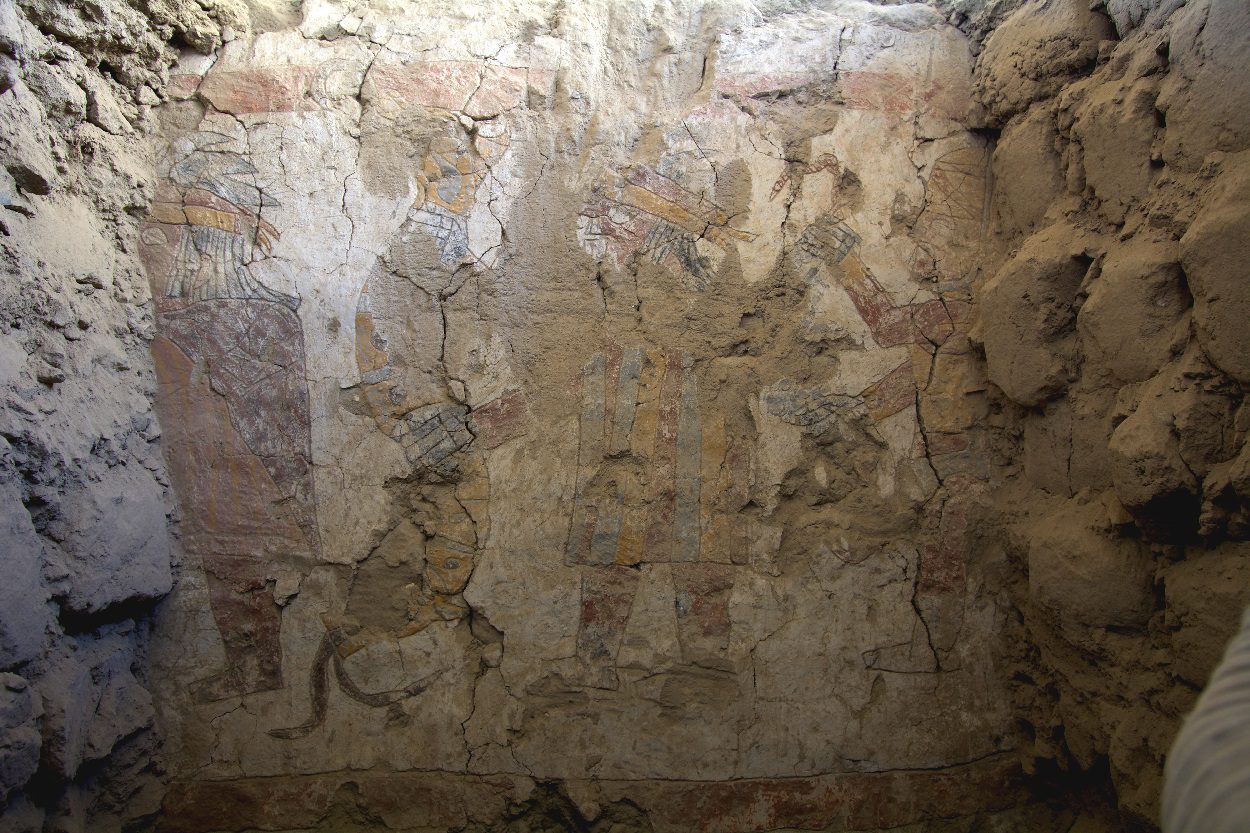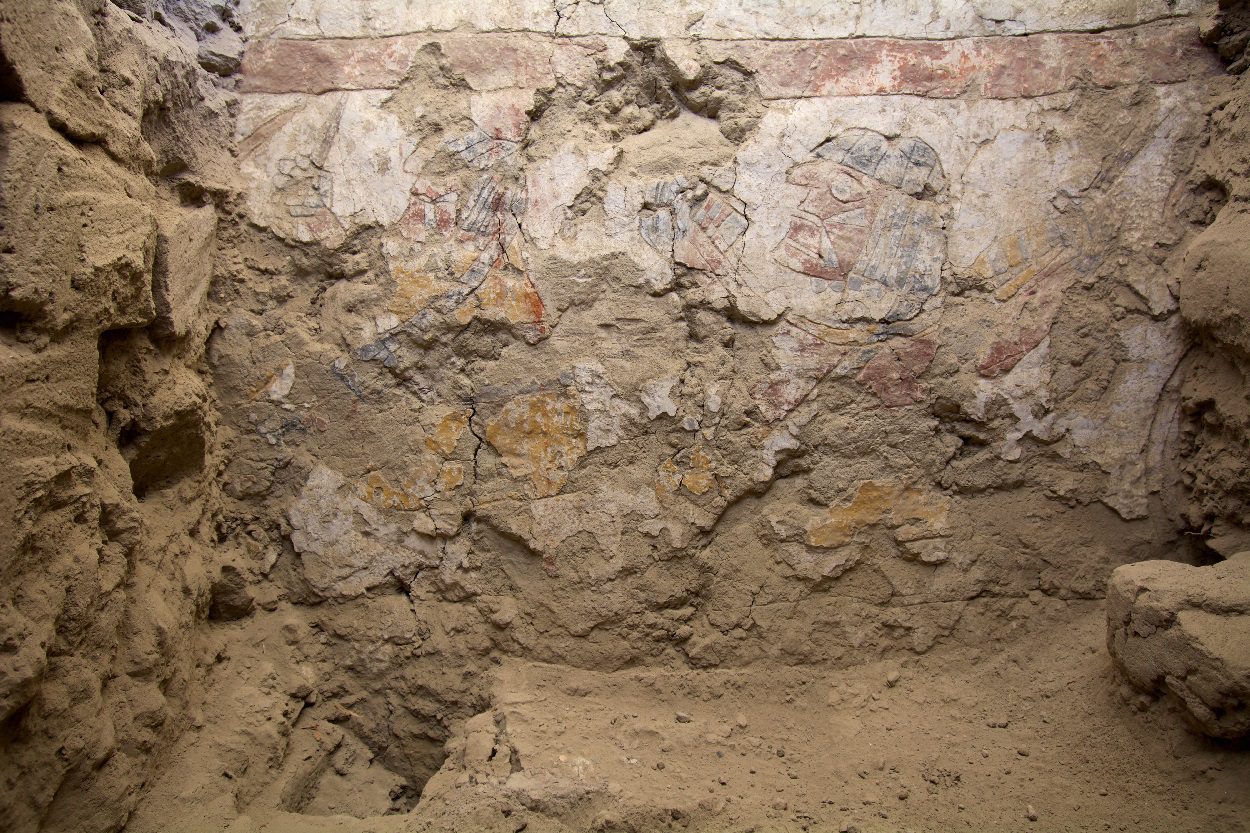ARCHAEOLOGISTS FROM COLUMBIA UNIVERSITY AND THE DENVER MUSEUM OF NATURE & SCIENCE (DMNS) HAVE UNCOVERED A CEREMONIAL HALL ASSOCIATED WITH THE MOCHE CULTURE, CONTAINING 1,400-YEAR-OLD MURALS DEPICTING TWO-FACED FIGURES.
The Moche culture, also known as the Mochica culture, is an ancient Andean civilisation that flourished from the 1st to the 8th century AD on the northern coast of Peru. The name is taken from the great site of Moche, in the river valley of the same name, which appears to have been the capital or chief city of the Moche civilisation.
Excavations conducted at the archaeological site of Pañamarca, an architectural complex constructed between AD 550-800 in the Peruvian Ancash region’s lower Nepeña Valley, have revealed adobe walls decorated with 1,400-year-old murals.
Murals painted on a pillar depicts two-faced figures, one of which is shown holding a feather fan and a goblet with four hummingbirds, while the other figure is holding a feather fan and staff.
 Image Credit : Lisa Trever
Image Credit : Lisa Trever
Other murals have been uncovered in various states of preservation showing individual figures, or one scene that depicts multiple figures standing alongside an anthropomorphic serpent.
Lisa Trever of Columbia University said: “Pañamarca was a place of remarkable artistic innovation and creativity, with painters elaborating on their knowledge of artistic canons in creative and meaningful ways as the people of Nepeña established their position in the far southern Moche world.”
 Image Credit : Lisa Trever
Image Credit : Lisa Trever
“Our project has the potential to inaugurate a new period of understanding and appreciation of Moche art, including by contemporary artists who use these ancestral works as inspiration in their own practice,” added Trever.
The team has proposed that the mural paintings — together with the evidence of highland-style textiles and tropical feathers found alongside locally-made ceramics and material culture in the excavations — suggest multicultural relationships and long-distance economies.








